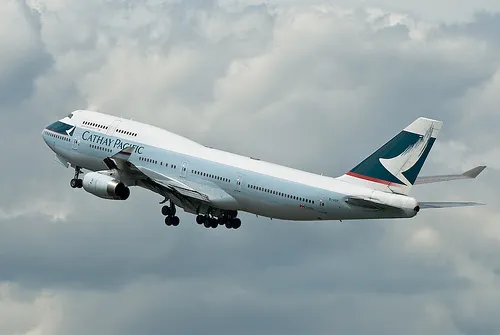
Cathay Pacific's 1H16 profit crashed 82.1% to HK$353m
Is it being battered by intense competition?
The Cathay Pacific Group reported an attributable profit of HK$353 million for the first six months of 2016. This compares to a profit of HK$1,972 million for the same period in 2015.
According to a release from Cathay Pacific, further, earnings per share were HK9.0 cents compared to HK50.1 cents for the first six months of the previous year. The operating environment in the first half of 2016 was affected by economic fragility and intense competition.
There was sustained pressure on revenues, reflecting suspension of fuel surcharges, weak currencies in some markets, weak premium class demand, particularly on long-haul routes, and a higher proportion of passengers transiting through Hong Kong. All these factors impacted the Group’s operating performance. The contribution from subsidiary and associated companies increased.
The Group’s passenger revenue in the first six months of 2016 was HK$33,413 million, a decrease of 7.8% compared to the same period in 2015. Capacity increased by 4.2%, reflecting the introduction of new routes and increased frequencies on other routes. Load factor decreased by 1.4 percentage points, to 84.5%.
Revenue was adversely affected by the suspension (from February) of fuel surcharges, which remained suspended for the rest of the period despite a subsequent rise in fuel prices. Yield fell by 10.1% to HK54.3 cents, reflecting the suspension of fuel surcharges, strong competition and adverse currency movements.
There was a significant reduction in premium corporate travel, particularly on long-haul routes. Revenue from long-haul routes declined compared to the same period in 2015, despite a 4.7% increase in long-haul capacity.
Here's more from Cathay Pacific:
The Group’s cargo revenue in the first six months of 2016 was HK$9,415 million, a decrease of 17.2% compared to the same period in 2015. The cargo capacity of Cathay Pacific and Dragonair increased by 0.6%. The load factor decreased by 1.9 percentage points, to 62.2%. Tonnage carried decreased by 0.2%. The overall market was weak during the period, although tonnage stabilised in the second quarter.
Yield fell by 17.6% to HK$1.59, reflecting strong competition, overcapacity and the suspension (from April) of fuel surcharges. Demand on European routes continued to be weak and demand on transpacific routes weakened. India was one of the few routes where demand strengthened. The Group managed freighter capacity in line with demand and carried a higher percentage of cargo in the bellies of its passenger aircraft.
Total fuel costs for Cathay Pacific and Dragonair (before the effect of fuel hedging) decreased by HK$4,023 million (or 31.9%) compared with the first half of 2015, despite a rise in the price of fuel in the second quarter. A 33.3% decrease in average prices was partially offset by a 2.0% increase in consumption. Fuel remains the Group’s most significant cost, accounting for 29.1% of operating costs in the first half of 2016 (compared to 34.2% in the same period in 2015).
Lower fuel prices were partially offset by fuel hedging losses. After taking hedging losses into account, fuel costs decreased by HK$3,360 million (or 20.2%) compared with the first half of 2015.
Congestion at Hong Kong International Airport and air traffic control constraints in the Greater China region continued to impose costs on the Group. The Group is doing more to improve the reliability of its operations.
Productivity improvements kept the increase in non-fuel costs in the first half of 2016 below the increase in capacity. There was a 0.5% reduction in non-fuel costs per available tonne kilometre. In response to weak revenues, the Group introduced measures intended to reduce non-operational costs. The Group is reviewing productivity and expenditure, has stopped the hiring and replacement of non-operationally critical staff, and is restricting non-essential discretionary spending. Despite these short-term measures, the Group continues to make long-term investments.








![Cross Domain [Manu + SBR + ABF + ABR + FMCG + HBR + ]](https://cmg-qa.s3.ap-southeast-1.amazonaws.com/s3fs-public/styles/exclusive_featured_article/public/2025-01/earth-3537401_1920_4.jpg.webp?itok=WaRpTJwE)









 Advertise
Advertise


